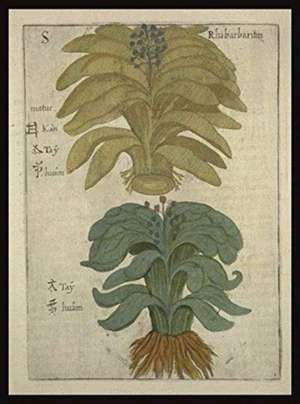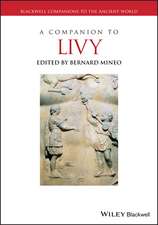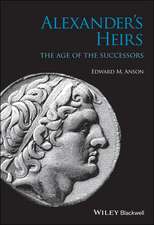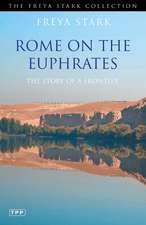Sino-Iranica: China and Ancient Iran: Commodities and Cultural Exchange from 1000BC to Medieval Times
Autor Berthold Laufer Introducere de Brian Spooneren Limba Engleză Hardback – 10 oct 2017
Preț: 721.46 lei
Preț vechi: 1031.75 lei
-30% Nou
Puncte Express: 1082
Preț estimativ în valută:
138.07€ • 143.61$ • 113.98£
138.07€ • 143.61$ • 113.98£
Carte tipărită la comandă
Livrare economică 15-29 aprilie
Preluare comenzi: 021 569.72.76
Specificații
ISBN-13: 9781784532017
ISBN-10: 1784532010
Pagini: 472
Dimensiuni: 156 x 234 x 42 mm
Greutate: 0.86 kg
Editura: Bloomsbury Publishing
Colecția I.B.Tauris
Locul publicării:London, United Kingdom
ISBN-10: 1784532010
Pagini: 472
Dimensiuni: 156 x 234 x 42 mm
Greutate: 0.86 kg
Editura: Bloomsbury Publishing
Colecția I.B.Tauris
Locul publicării:London, United Kingdom
Notă biografică
Berthold Laufer (1874-1934) was a pioneering anthropologist and sinologist. He attended the universities of Berlin and Leipzig, where he studied a wide range of languages, including Persian, Sanskrit, Chinese, Mongolian and Tibetan, under the leading scholars of the day. He moved to the USA at the suggestion of Franz Boas, taking up a position at the Museum of Natural History in new York and joining the Jesup North Pacific Expedition to Siberia and Alaska, ultimately leading the expedition. Laufer then joined the Field Museum of Natural History in Chicago, where he became Head of the Department of Anthropology there. He led three further expeditions to China - the Jacob H. Scruff Expedition of 1901-4, the Blackstone Expedition of 1908-10 and the Marshall Expedition of 1923. He was responsible for one of the first collections of Chinese material culture in the USA. His two books, Jade: A Study in Chinese Archaeology and Religion and Chinese Pottery of the Han Dynasty remain seminal works. Sino-Iranica, here published as Ancient Iran through Chinese Records is regarded as his most significant work.
Cuprins
CONTENTSNew Introduction by Brian SpoonerIntroductionSino-Iranica Alfalfa The Grape-Vine The Pistachio The Walnut The Pomegranate Sesame and Flax The Coriander The Cucumber Chive, Onion, and Shallot Garden Pea and Broad Bean Saffron and Turmeric Safflower Jasmine Henna The Balsam-Poplar Manna Asafoetida GalbanumOak-Galls Indigo Rice PepperSugar Myrobalan The 'Gold Peach'Fu-tse Brassica Cummin The Date-Palm The Spinach Sugar Beet and Lettuce Ricinus The Almond The Fig The Olive Cassia Pods and Carob Narcissus The Balm of Gilead Note on the Language of Fu-lin The Water-Melon Fenugreek Nux-VomicaThe Carrot Aromatics Spikenard-Storax-Myrrh-Putchuck-Styrax benjoinThe Malayan Po-se and Its Products Alum-Lac-Camphor-Aloes-Amomum- P, o-lo-te-Psoralea-EbonyPersian Textiles Brocades-Rugs-Yue no-Woolen Stuffs-AsbestosIranian Minerals, Metals, and Precious StonesBorax-Sal Ammoniac-Litharge-Gold-Oxides of Copper-Colored SaltZinc--Steel-Se-se-Emerald-Turquois-Lapis Lazuli-Diamond-Amber-Coral-BezoarTitles of the Sasanian Government 529Irano-Sinica The Square Bambo-Silk-Peach and Apricot-Cinnamon-Zedoary-Ginger-Mamiran-Rhubarb-Salsola-Emblic Myrobalan-Althaea-Rose of China-Mango-Sandal-Birch-Tea-Onyx-Tootnague-Saltpetre-Kaolin-Smilax pseudochina-Rag-paper-Paper Money-Chinese Loan-Words in Persian-The Chinese in the Alexander RomanceAppendix I Iranian Elements in Mongol Appendix II Chinese Elements in Turki Appendix III The Indian Elements in the Persian Pharmacologyof Abu Mansur Muwaffaq Appendix IV The Basil Appendix V Additional Notes on Loan-Words in Tibetan General Index Botanical IndexIndex of Words















